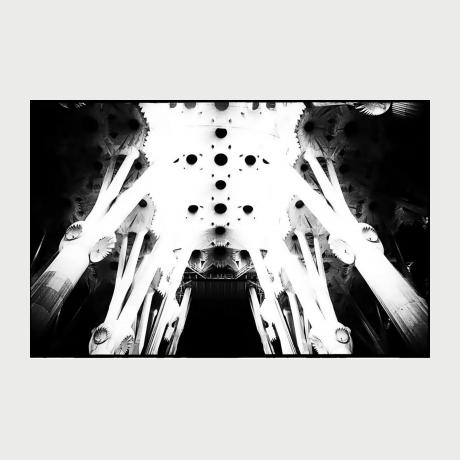Arte Des-generado collective
DESCRIPCITION OF THE PROPOSED PROJETS
First of all we would like to present the project of the cultural association:
Arte Des-generado collective was born from a theoretical reflection that generates two conversations between photographic statements and visions apparently very different, but in permanent dialogue between them.
Not in vain, both artists share the same defining value; the search for "aesthetics" and the photography act as a common bridge and give rise to a voice of their own, beyond the theoretical rules and their form of expression.
The group formed by Helga M. Pallarés and Antonio Ferrer, began its journey in 2016 and has carried out different narrative, artistic and performative projects, either alone or in the company of other artists.
The photographic projects that we present for this fair are two related to the transformation of our environment (Antonio Ferrer) and two others related to people, one of the woman in the Masculine society and the other memories of memory (Helga M. Pallarés) .
Blinding light (Antonio Ferrer)
"For a few seconds a blinding light covered the city ..." This phrase describing the explosion of the first atomic bomb on Hiroshima, is the starting point of the series.
I have tried that in all the photographs there is an area, in which an excess predominates of "blinding" light that prevents the viewer from seeing in detail that part of the image, having That is why you turn to your imagination to complete the vision of the image. Add link for video https://www.youtube.com/watch?v=au-Gus3WAMk
Deconstructions ( Antonio Ferrer)
Cuando vemos When we see the photographs of this series, we seem to see a collage invented by the author to make us see a landscape cut into an imagined world.
The framing is broken by returning it to construction but with changes, that struggle of the negative and the positive between the two elements trying to make one of the two disappear in our subconscious as it bothers him and wants to hide it, it is a similarity with our own life when We select partial elements and want to forget or hide others. This interaction between the image and the viewer helps black and white - sepia out of the reality of the color to which we are accustomed.
HOOK UP GENERATION ( Helga M Pallarés)
Times have changed, and also the way of building and understanding relationships, their models, the emerging of needs and new forms of living together. The equation house + marriage + children still remains today, but without the mandatory connotation imposed a few decades ago. Freedom to relate and new technologies have imposed new ways of seduction, conquest and different ways of living relationships; but, same as always, there are those who want to fall in love, those who only seek casual sex, or even those who just want to stay away until someone fascinates them into commitment.
My project is part of a series around these concepts. Different approaches to the question of whether relationships, changes imposed by the digital image and the approaching through social networks or applications such as Tinder or Happn have modified concept of love. Are enjoyment and pleasure the only important things? Is digital age an impediment to getting closer to partners? Do we know more about sex, desire, gender, and about what it is desirable in a relationship now in the XXI century?
Maybe Generation Z, the millennials, or the also known as "HOOK UP GENERATION" will have the answers.
Fragmented Memory
MOTIVATION
Try to keep them, poet,
however few are those that stop.
The visions of your love.
Put them, half hidden, between your phrases.
Try to retain them, poet,
when they wake up in your mind
at night or in the glow of noon.
(When they wake up, Constantine Kavafis)
Neuroscience argues that what excites us is not forgotten.
It doesn't matter if they are joys or dislikes; The brain retains certain gestures, details and fragmented situations, because the emotion that accompanies them activates regions involved in the formation of memories, such as the hippocampus and the cerebral cortex.
In addition, the release of hormones, such as adrenaline, helps reinforce the memory of emotional situations; With the passage of time, what we usually remember is what makes us fall in love or hurt us, although we could not evoke it at the time it happened.
It is those details, those that touch our soul, that last, making the image (diffuse and fragmented, but with a strong poetic and emotional charge) frozen in the unconscious, and forever retained.
My work is a reflection on the emotional constructions in the brain of oblivion and memory, based on neuroscience and psychoanalysis, but also on visual poetics.
Attached is a download link for the photo albums associated with the projects defined in the text.







